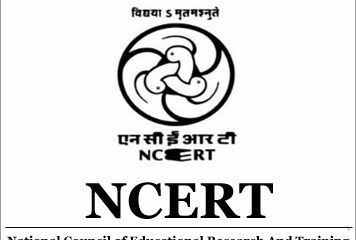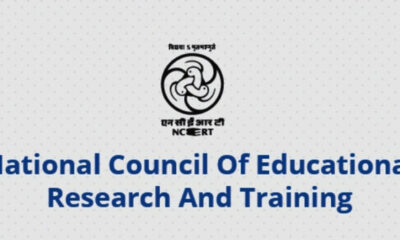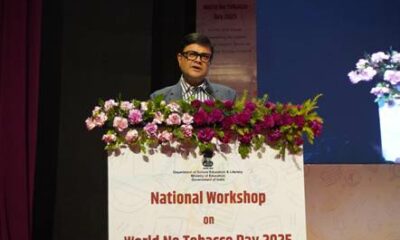News
Public education in India has to jump many hoops
Successive governments have taken out the constitutional obligation towards education out of the educational policies. This takes out the fundamental right of universal education out of the equation thus giving rise to inequalities in the system.
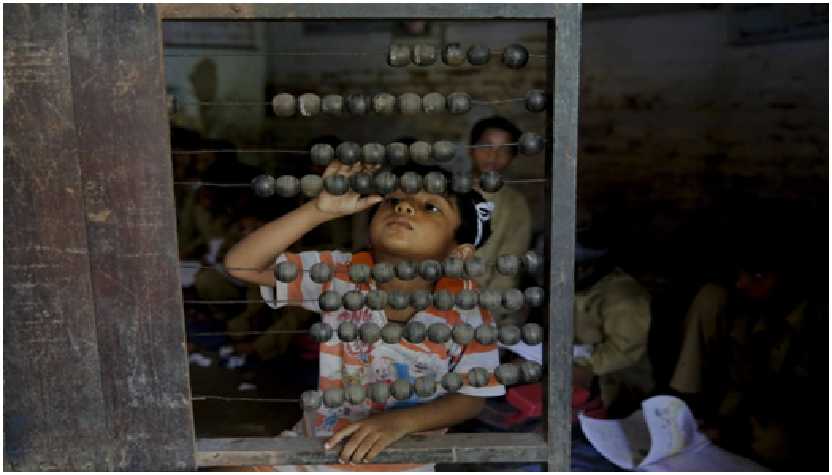
That the New Education Policy has created waves much before it has officially become a policy is amply clear by the media coverage that it has generated, some for the big strides it aims to take while some negative coverage for the way the policy is being handled. The latest is the war of words between Human Resource Development Minister Smriti Irani and former Cabinet Secretary T.S.R. Subramanian over the report of the New Education Policy (NEP) committee headed by him. While Subramanian is threatening to make his report public; Smriti Irani counters by saying that this can only be considered after the States have sent in their responses to it. In fact, this tug of war is symptomatic of the manner in which the entire exercise of drafting the NEP has been carried out.
Smriti Irani claimed that the Narendra Modi government’s NEP was going to be the result of a collective effort of more than 2.6 lakh consultations around 13 themes earmarked for school education at gram panchayat, block, district, State, groups of States and national levels. These consultations took place through a list of questions supplied by the HRD Ministry to elicit recommendations which would serve as inputs for each of the themes for the Draft NEP document.
Now, the questionnaire couldn’t have been drafted by experts, which explains the surprising composition of the committee itself. Headed by a former Cabinet Secretary, it includes 3 retired government Secretaries and a former Director of the National Council of Educational Research and Training (NCERT), J.S. Rajput, whose credentials are questionable since his participation in the “saffronisation” of textbooks during Murli Manohar Joshi’s tenure as HRD Minister in the previous National Democratic Alliance (NDA) government.
Available information, most of which is hearsay as the Ministry has refused to divulge any details, point out that no such scheduled meetings took place. Even if higher level meets did happen, they were orchestrated to legitimatise claims that recommendations represented “the voice of the people”, and that officials and education officers dominated proceedings at meetings where school principals, teachers, government invitees and some school management committee members were herded together. In this scenario, it is not surprising that the HRD Ministry has failed to make the content of the “people’s” recommendations publicly available. A similar lack of transparency shrouds the national and regional debates held by the University Grants Commission (UGC), the National University of Educational Planning and Administration (NUEPA), the NCERT and other national-level institutions.
This methodology shrouded in secrecy by the HRD Ministry is disturbing and problematic. Take for example the total lack of analysis of previous policies and no overview of the consequences of implementing the changes introduced by the National Policy on Education (NPE) 1986, its companion Programme of Action, and their modified versions (1992). Before the NPE, democratic goals and the guiding principles of equality and social justice articulated during the freedom struggle informed policies, although it soon became evident that successive governments failed to meet their constitutional obligations. It is no coincidence that the changes introduced by the NPE coincided with the adoption of the economic reforms programme by the Narasimha Rao government in 1991.
Since the NPE was in line with the economic reforms, it focussed on supplying the economy with employable human capital. It was through implementation of a series of missions and abhiyans to impart market-oriented “skills”, the lowest one being “functional literacy”. It needed a conceptual and curricular delinking of cognitive and aesthetic aptitudes from acquisition of the practical skills which were deemed sufficient for making the mass of citizens employable.
Completely violating the constitutional obligation to ensure universal free and compulsory education of comparable quality, the NPE introduced a policy provision for low-cost, poor quality, non-formal education (NFE) which was to be treated as “equivalent to schooling” for those children who could not “be expected to attend a full day at school”. This excluded a vast majority of children in the relevant age group from the formal system of education. With one swift stroke the NPE discriminated a large swath of students under the guise of providing employable capital.
However, NFE only prepared the ground for a policy of multitrack, discriminatory streams of education. Matters were to become far worse, as under pressure from the World Bank, the 1994 District Primary Education Programme (DPEP) introduced “low-cost” infrastructural and recruitment practices into the government school system across the country. The concept of para-teachers and contract teachers were introduced to cut costs. After the Fifth Pay Commission (1996), recruitment of permanent trained teachers was badly affected in most States. Yet, trained teachers were required to be available for official duty during Census, elections, health campaigns such as polio eradication, and now even “disaster management”. In came the Non-governmental organisations (NGOs) for improving quality and all these things resulted in driving the entire system to the brink of collapse.
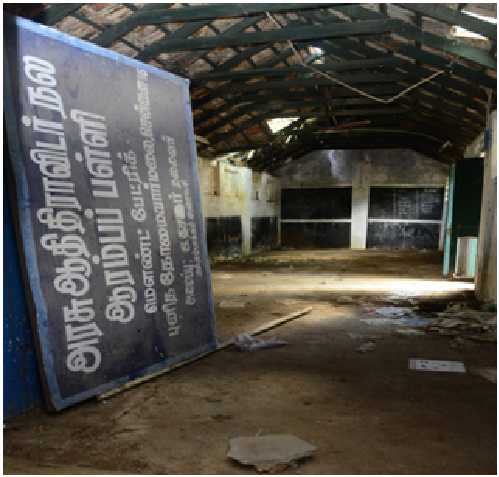
Limitations of the RTE
While we read glorifying tales of the impact of RTE in the media how it is empowering the under-privileged to get their space under the education sun, the truth is that RTE has a horrible underbelly. RTE became the legal form of discrimination at every level. It excluded pre-school Early Childhood Care and Education for 0-5-year-olds. It excluded secondary education for 15-18-year-olds. It excluded the “special” government schools which were proof that governments could run schools when they were required to. But like already pointed out it provided us a peep into the future. The much-lauded and equally utilised 25% admission for children from the Economically Weaker Sections (EWS) had a salutary effect by starting a public private partnership (PPP) model which today allows transfer of crores of rupees of public funds to high-fee charging and low-budget private schools alike.
The truth is that across the political spectrum this policy perspective has either been actively contributed to—if the United Progressive Alliance (UPA) governments brought in the NPE and the RTE, the NDA brought the 86th Amendment Bill which defined the limits of the RTE and the concept of knowledge as a “tradeable commodity”, and education as a “tradeable service”—or been accepted as the model of development by all governments in power. The Modi government’s Skill Development campaign not only rests on the foundation of the NPE 1986, but also requires the changes proposed to child labour laws allowing children less than 14 years of age to participate in hereditary trades.
Quick-fix solutions
Coming back to the approach used by the HRD Ministry. It is fundamentally flawed as even after “widespread” consultation has taken place, there is no vision, principle or logic on which one set of suggestions should have precedence over other alternatives. No strategy either underlies or could be formulated out this wasteful exercise, which flies in the face of government claims that there are no funds for education and has resulted in savage cuts made in budgetary allocations over the past 2 years.
However, miraculously this does not mean that an agenda is not being advanced. If on one hand, there is no vision for reviving the stagnant public education system, on the other hand, it has to be admitted that government “policy” is herding parents to the gates of commercialised private institutes. The NGO Pratham’s Annual Status of Education Report (ASER 2012) showed that in just 2 years after the implementation of the RTE Act, there was a 5.8% increase, up from 29.8% in 2010-11, in private school enrolment for primary (Classes I–V) students.
In State after State, governments are compelled to close or merge schools because students are deserting them. Rajasthan, Gujarat, Madhya Pradesh, Andhra Pradesh, Telangana, Karnataka, and even Himachal Pradesh and Kerala, once stellar examples of the success stories of the public education system, have stated that the policy is inevitable. Thousands of teachers are becoming redundant by the process of “rationalisation” because it saves public funds on paying their salaries. Holding on by a hairs length, people’s organisations in some States have been able to push back this dismantling of the state-funded and maintained school system for one more year.
Stark inequalities
Clearly, India’s education system is reproducing social inequalities and not removing them. Earlier the lack of political will to address caste, class and gender failed to universalise education, and today discriminatory policies are reinforcing inequality. Illiterate children are not a result of poverty but due to negative attitudes and misplaced priorities of policy (ASER 2015). Segregating the poor and the disadvantaged and educating them in institutions catering exclusively only to them will deny the fundamental right to education to a majority of children even as privilege masquerades as merit.
Regarding the medium of instruction, contrary to all egalitarian preferences for the mother tongue as the language of learning, fluency in English is driving even poor families to take on the crushing fee-burden of private “English medium” schools and is generating the self-defeating demand that government schools should shift from the vernacular to the English medium.
In this darkening scenario, a ray of light has been the recent landmark judgment of the Allahabad High Court (August 18, 2015) which emphasised the democratic and educational importance of shared schooling for children from all sections “. . . in changing society from grass-root level. The initial level mixing among all children will have different consequences.” It went on to say that the division of schools into “elite”, “semi-elite” and “common man’s schools” based on privilege and wealth have neither an educational basis nor social value in a democratic society.
“After more than 65 years of independence, these (common men’s) schools are still struggling to have basic amenities for children…. It is not difficult to understand why conditions of these schools have not improved. The reason is quite obvious and simple…. There is no real involvement of administration with these schools. Any person who has some capacity and adequate finances sends his child/children to elite and semi-elite primary schools. They do not even think of sending their wards for primary education to… third category schools, i.e. common men’s schools. The public administration therefore has no actual indulgence to see functioning and requirements of these schools.”
This enforced integration ordered by the court cannot be deemed a denial of “democratic choice” for the affluent elites because the judgment holds choice itself as the reason for the vast majority of India’s children being denied their fundamental right to education. The State government was thus directed to ensure that “the children/wards of government servants, semi-government servants, local bodies, representatives of people, judiciary and all such persons who receive any perk, benefit or salary, etc. from State exchequer or public fund, send their child/children/wards who are in age of receiving primary education, to primary schools run by Board… and ensure to make penal provisions for those who violate this condition”.
A resounding nod to the common school system
The judgment’s resounding endorsement of the Common School System in modern democratic societies is grounded in historical fact. No system of quality education has ever been universalised without the participation of the state. The judgment should not only be implemented forthwith in Uttar Pradesh. It should be extended to cover all States of India.
The other beacon of hope is the sustained struggle of students from numerous institutes of higher education to defend the democratic right to both knowledge and dissent.
So can we expect a radical change from the HRD Ministry? The “special touch” which the present regime has brought to the education system has more to do with bringing the system firmly under the official control of the Center with centrally sponsored Teachers’ Day events, Swachch Bharat campaigns, Sanskrit Week, compulsory sessions of the Prime Minister’s radio speeches, yoga days, and even decisions on which festivals children will be allowed to celebrate with their families.
In an underhanded style of working, historical and sociological facts are distorted to facilitate indoctrination through textbooks. Finally, Rashtriya Swayamsewak Sangh’s (RSS) student wing, the Akhil Bharatiya Vidyarthi Parishad (ABVP) being used to declare radical Ambedkarite, Marxist and even independent-minded university students and teachers as extremists and anti-nationals, initiating disciplinary action and even slapping charges of sedition against them are an undisguised threat to the future of the country’s educational institutions.
Clearly, the HRD Ministry has learnt nothing from its misadventures, and education and educational institutions will continue to be in turmoil.
This post is based on an article originally published here
Education
AI to Become a Core Subject from Class 3: India’s Big Leap Toward a Future-Ready Generation
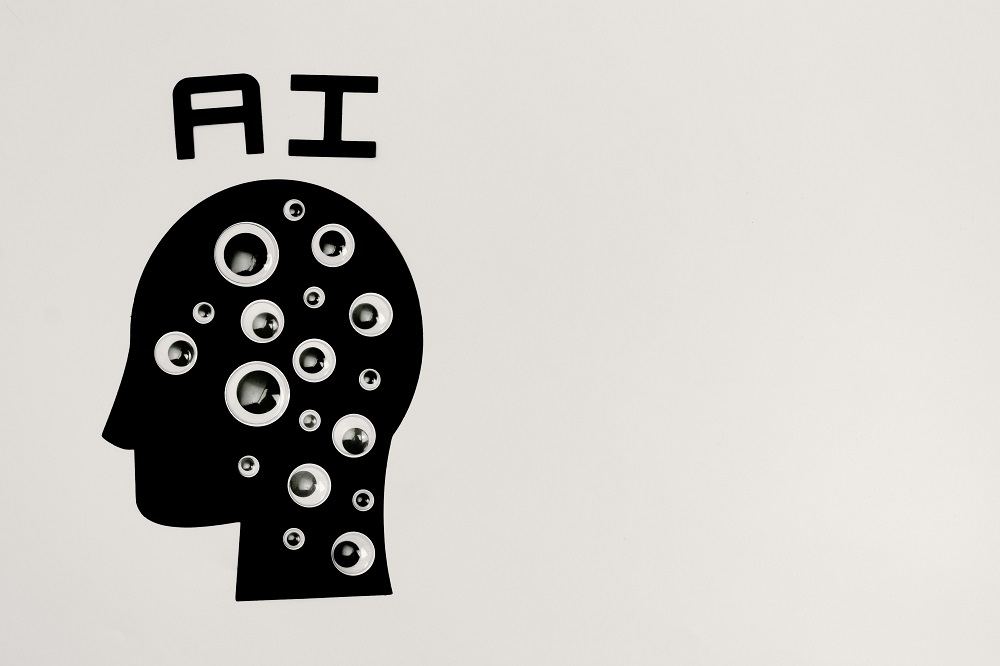
In a landmark move to make India’s school system future-ready, the Department of School Education & Literacy (DoSE&L), Ministry of Education, has announced that Artificial Intelligence (AI) and Computational Thinking (CT) will be introduced as part of the school curriculum from Class 3 onwards, beginning in the academic year 2026–27.
The initiative marks a major step in preparing students for an AI-driven world, ensuring early exposure to technological literacy, ethics, and problem-solving. The curriculum, currently being developed through a consultative process with CBSE, NCERT, KVS, NVS, and States/UTs, will fall under the National Curriculum Framework for School Education (NCF-SE) 2023, in alignment with the National Education Policy (NEP) 2020.
A stakeholder consultation held on 29th October 2025 brought together education leaders, including Prof. Karthik Raman from IIT Madras, who heads the CBSE expert committee responsible for shaping the AI & CT curriculum. The focus is on designing a meaningful, inclusive framework that integrates AI not as an advanced elective but as a foundational skill — comparable to literacy and numeracy in importance.
Shri Sanjay Kumar, Secretary, DoSE&L, emphasised that AI education should be viewed as a universal skill closely linked to real-world applications. “Every child’s distinct potential is our priority. Policymakers must define minimum thresholds and evolve them with changing needs,” he said. He also stressed on teacher training as the backbone of successful implementation, with modules under NISHTHA, and resource materials being prepared by NCERT and CBSE.
The Ministry plans to release AI handbooks and digital resources by December 2025, followed by a grade-specific rollout supported by video-based learning materials and structured training.
By embedding AI education from the foundational years, India aims to nurture a generation that understands, creates, and applies technology ethically — transforming the vision of AI for Public Good into everyday classroom reality.
Education
Dharav Utsav to Celebrate Rajasthan’s Cultural Heritage and Local Talent

Education
Beyond the Syllabus: School Teachers’ Insights on Project-Based Learning

How classroom experiences are being reshaped through projects, inquiry, and authentic learning
As the classroom grows beyond the boundaries of textbooks and blackboards, so too does the role of the teacher, and the very meaning of learning. Project-Based Learning (PBL), once considered a niche innovation, is increasingly being embraced by educators across schools in India. But what happens when PBL moves from theory to practice?
To answer this, we turned to the people at the heart of the learning experience: teachers.
In conversations with educators from diverse school contexts, one theme was clear: PBL is not just a teaching strategy; it’s a transformation in how students learn, engage, and grow.
From Worksheets to Real-World Work: How PBL Differs from Traditional Homework
One of the clearest contrasts teachers observed was how PBL moves learning from repetition to relevance. Traditional homework often reinforces information through rote exercises. PBL, by contrast, asks students to apply their knowledge to solve problems, create products, or investigate issues that matter to them.
One teacher shared how using PBL to raise student awareness about water pollution was a hit in the class. Instead of just assigning problems, the students were made to create awareness posters, conduct surveys in their neighbourhood, and suggest solutions through group presentations. The teacher also noted how the students took the lead, and had an ownership over this project that they usually don’t showcase.
The shift from repetition to application fosters deeper engagement. Several teachers noted that students who previously struggled to stay motivated with homework showed renewed interest when asked to take on real-world challenges.
Changing Roles: Teachers as Facilitators, Not Just Instructors
Project-Based Learning also changes the role of the teacher, who went from being the sole source of knowledge to a guide who supports inquiry and exploration.
One common change teachers noticed was on how they had to let go of control in the classroom. Naturally, the students now had to work on projects on their own, and could only come to the teacher for guidance and help. The teachers noted that they helped their students ask the right questions, find credible sources, and evaluate their work, instead of completely placing the burden of learning on the teacher themselves.
This change isn’t always easy. It requires a shift in mindset and in many cases, rethinking how time is used in class. But most teachers agree: the shift is worth it. PBL has encouraged interdisciplinary approaches, made space for collaborative learning, and created more meaningful student-teacher interactions.
Unlocking Student Potential: What PBL Offers Beyond Academics
Academic performance remains important, but a lot of teachers repeatedly pointed out that PBL nurtures a broader set of skills, like critical thinking, collaboration, communication, and creativity. One teacher particularly noted on how their quietest students became ‘leaders’, and became outspoken when it came to presenting their ideas and projects. While not directly, PBL helped these students find their voices, and find confidence in their effort and abilities.
Students learn to manage time, negotiate roles, and solve problems, skills that aren’t always reflected in exam scores but are vital for life beyond school. For many teachers, the most rewarding aspect of PBL was watching students take initiative, work through failure, and reflect on their learning.
Widening the Circle: Strategies for Scaling PBL in More Classrooms
While the benefits are clear, teachers acknowledged that implementing PBL at a large scale comes with challenges, like limited time, rigid curriculum structures, and unfamiliarity among teachers.
They offered a few practical suggestions for schools and educators considering wider adoption:
- Start Small and Build Confidence: Starting with short projects aligned to the unit you are already teaching introduces PBL in an easy manner. This way, teachers do not have to worry about overhauling their curriculum, or for making huge changes to their current teaching methods.
- Encourage Collaboration Among Teachers: Joint planning across subjects makes projects richer and more integrated. This also promotes interdisciplinary skills among students, and allows them to craft solutions using different subjects and skillsets.
- Make Time for Reflection: Embedding opportunities for students to present, critique, and reflect helps solidify learning. By reflecting on their projects and mistakes, they can understand how they can improve their approach to PBL.
- Support Professional Development: Teachers emphasized the need for ongoing training, not just one-off workshops but long-term spaces for peer sharing and mentorship. This continuous development would cement and solidify the methods and outcomes that will maximise using PBL for student benefits
Looking Ahead: Redefining Success in Education
PBL challenges traditional ideas of what learning looks like. It pushes students to move beyond memorization, and it challenges teachers to rethink their methods. But more than anything, it opens up the classroom to ideas, to communities, and to possibilities. No longer are students just preparing for exams, but also for the complex world outside school.
As educators continue to navigate the changing landscape of education, the insights from teachers point us toward a hopeful future, where learning is meaningful, relevant, and rooted in real-world experience.
This article is authored by Mrs. Padmashini M Patro, Principal, Air Force School Bamrauli
Education
Over 1 Lakh Single-Teacher Schools Educate 33 Lakh Students Across India: MoE Data
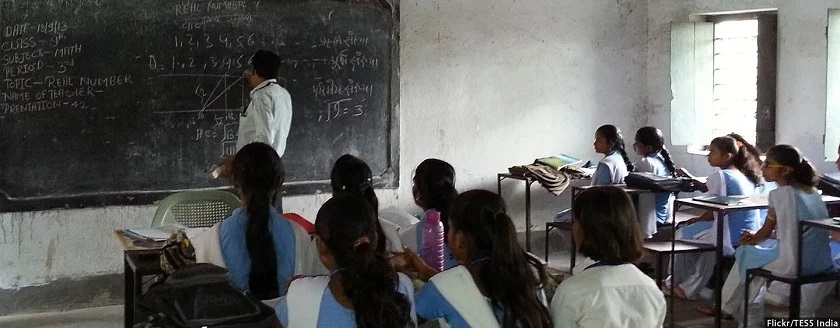
Education
Over 3 Lakh Schools Join Hands for India’s Largest-Ever Innovation Challenge: Viksit Bharat Buildathon 2025

In a historic moment for Indian education, more than 3 lakh schools across the country came together to participate in the Viksit Bharat Buildathon (VBB) 2025, the largest live school innovation challenge ever organised in India. The nationwide event was inaugurated in New Delhi by Union Education Minister Dharmendra Pradhan, marking a significant milestone in the Government’s efforts to embed creativity, innovation, and problem-solving into the school ecosystem.
The Viksit Bharat Buildathon, organised by the Department of School Education & Literacy (DoSEL) in collaboration with Atal Innovation Mission (AIM), NITI Aayog, and AICTE, saw over one crore students from Classes 6 to 12 working simultaneously during a 120-minute live innovation session. Students teamed up in groups of three to five to design prototypes and propose solutions under four themes — Atmanirbhar Bharat, Swadeshi, Vocal for Local, and Samriddhi.
While inaugurating the event, Minister Pradhan interacted virtually with students of PM SHRI Government High School, Khorda, Odisha, and later visited Delhi Public School, Mathura Road, and Kendriya Vidyalaya No. 2, Delhi Cantt. Commending students for their creativity, he said, “The vision of Viksit Bharat will be realised through the innovative spirit of our young learners. These ideas will not only address domestic challenges but also create global models for change.”
The event drew widespread participation, with Uttar Pradesh leading the numbers (78,206 schools), followed by Maharashtra (41,198), Gujarat (20,017), and Madhya Pradesh (18,129). Other states like Tamil Nadu (16,370), Bihar (15,732), Odisha (12,344), and Haryana (11,567) also recorded impressive engagement, showing the growing momentum for grassroots innovation across regions. Even smaller territories like Ladakh (358), Puducherry (149), and Andaman & Nicobar Islands (171) participated actively, reflecting the nationwide reach of the initiative.
According to Sanjay Kumar, Secretary, DoSEL, this unprecedented participation signals a transformation in how Indian students approach learning. “This one-of-a-kind movement strengthens innovative thinking and enhances the problem-solving capabilities of students across India,” he said. Deepak Bagla, Mission Director of AIM, called the initiative a “mass movement connecting schools in remote villages with those in metropolitan cities through innovation.”
A New Chapter for Indian Education
The Viksit Bharat Buildathon signifies more than just a hackathon — it reflects a systemic shift in Indian education towards experiential and innovation-led learning. As schools across the country engage in design thinking, tinkering, and collaboration, students are being equipped not just with knowledge, but with the mindset and skills needed to build a self-reliant India.
By nurturing creativity from an early age and fostering partnerships between schools, government bodies, and industry, the Buildathon is shaping a generation ready to contribute to the vision of Viksit Bharat 2047 — a developed, empowered, and innovation-driven India.
Education
17-year-old Innovator Designs Learning Tools for the Visually Impaired
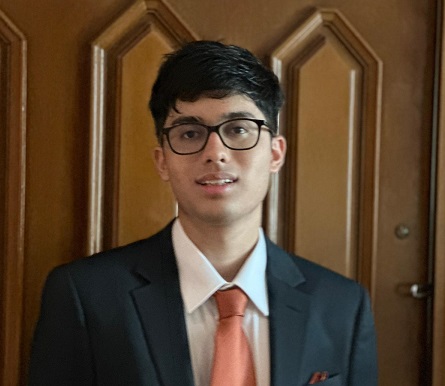
At just 17, Singapore-based student Ameya Meattle is proving that age is no barrier to impact. What began as a small idea to make education more accessible has evolved into a mission that is transforming how visually impaired learners experience learning and skill development.
Ameya founded Earth First at the age of 14 — a social enterprise that helps visually impaired individuals “earn and learn” by creating sustainable, eco-friendly products. Working with eight NGOs across India and Singapore, the initiative has trained more than 100 visually impaired students and launched over 23 sustainable product lines, from tote bags and jute placemats to macramé planters. Each design is adapted to provide hands-on learning opportunities and help trainees gain confidence in both craft and enterprise.
Beyond social entrepreneurship, Ameya has focused deeply on education and technology. He led a Python programming course for 50 visually impaired students, designing custom training modules that made coding accessible through screen readers and tactile tools. By introducing technology as a viable career pathway, Ameya hopes to help students move from manual tasks to high-skill, digital opportunities.
His work also extends into assistive technology research. Under the mentorship of Dr. Pawan Sinha at MIT, Ameya developed a VR-based diagnostic game to assess visual acuity in children — turning the process into an interactive experience rather than a clinical test. The tool is being piloted at MIT’s Sinha Lab and with Project Prakash in India, helping doctors evaluate and track visual development before and after eye surgeries.
In addition, during his internship at the Assistech Lab at IIT Delhi, Ameya worked on designing tactile STEM teaching aids, such as accessible periodic tables and coding tutorials for visually impaired learners. His goal, he says, is not just to innovate but to make scientific learning inclusive and joyful for all.
Ameya’s work highlights how education, empathy, and innovation can intersect to create a more equitable future — one where technology serves not just progress, but people.
Education
Ministry of Education Urges Schools to Adopt UPI for Digital Fee Payments, Promoting Ease of Schooling
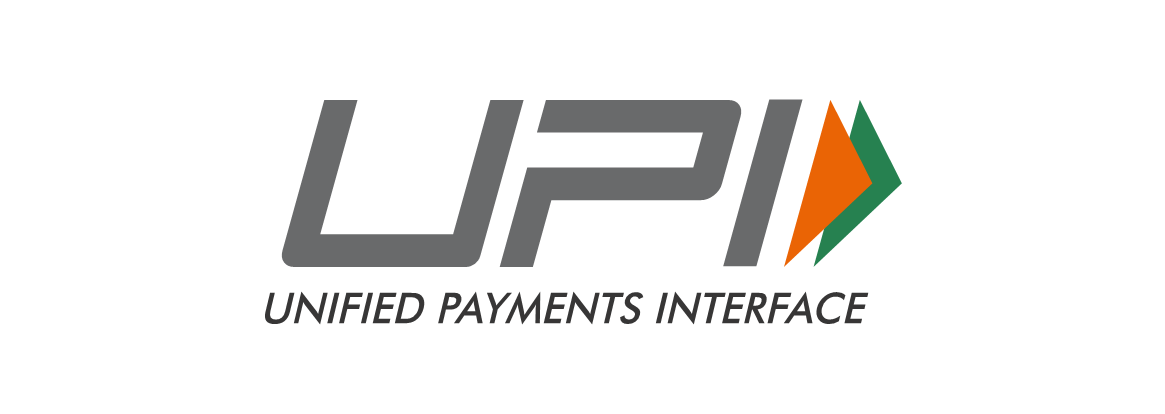
Education
Supreme Court Calls for Early Sex Education in Schools: “Not from Class IX, But from a Younger Age”

In a landmark observation, the Supreme Court of India has emphasised the urgent need to introduce sex education at a younger age, rather than waiting until Class IX as is the current norm. The apex court stated that children should be informed and sensitised about the physical and emotional changes that accompany puberty — and taught the necessary care and caution that come with it.
The observation came from a Bench comprising Justice Sanjay Kumar and Justice Alok Aradhe, which noted that the absence of early sex education leaves children vulnerable to misinformation and misunderstanding during their formative years.
“Sex education should be provided to children from a younger age and not Class IX onwards. It is for the authorities concerned to apply their mind and take corrective measures so that children are informed of the changes that happen after puberty,” the court stated.
The Bench made the remarks while hearing an appeal filed by a 15-year-old boy, who had been denied bail by the Allahabad High Court in a case under Sections 376 and 506 of the Indian Penal Code (IPC) and Section 6 of the Protection of Children from Sexual Offences (POCSO) Act. Recognising that the accused was himself a minor, the Supreme Court had earlier granted him bail in September 2025.
In the same case, the Court had directed the Government of Uttar Pradesh to submit an affidavit explaining how sex education is currently implemented in schools. The state responded that sex education is introduced only in Classes IX to XII, following NCERT guidelines. However, the Bench expressed concern over this delayed introduction and urged policymakers to revisit the framework to ensure children receive age-appropriate education much earlier.
The Court set aside the High Court’s order and made the juvenile’s bail permanent until the completion of the trial. More importantly, its remarks have reignited the national debate on the need for comprehensive sexuality education in India, which many experts argue is crucial to preventing abuse, reducing stigma, and promoting healthy development among adolescents.
Education experts have long maintained that early, factual, and inclusive discussions about puberty, consent, and emotional health must begin before adolescence — ideally in primary school — to prepare children for real-world experiences and relationships. The Supreme Court’s observation is expected to prompt renewed policy discussions on revising the sex education curriculum nationwide.
Education
Delhi Government Launches Online First Aid Training Programme for Teachers

The Delhi government has introduced a new online training programme designed to equip teachers with essential first aid skills to respond effectively during health emergencies in schools.
According to a circular issued by the State Council of Educational Research and Training (SCERT), the course — titled “First Aid – To Improve Human Reaction in Challenging Health Situations” — will be conducted under the Massive Open Online Course (MOOC) format. The training is mandatory for all teachers and will run from October 9 to October 19, 2025.
The initiative aims to increase awareness about the importance of readiness in medical emergencies and the role of first aid in saving lives. It will also educate teachers on maintaining functional first aid kits in classrooms and demonstrate practical methods for administering care in real-life situations.
Teachers must achieve at least 70 per cent in each assessment to complete the course successfully. Upon completion, participants will receive certificates, which can be downloaded directly from the platform.
By introducing this online training, the Delhi government seeks to build a culture of preparedness and safety across schools. With thousands of teachers gaining basic emergency response skills, the initiative is expected to significantly improve the ability of schools to manage sudden health crises and ensure student well-being.
Education
Atal Innovation Mission and IFCCI Join Hands to Scale Up Atal Tinkering Labs Across India

The Atal Innovation Mission (AIM), NITI Aayog, and the Indo-French Chamber of Commerce & Industry (IFCCI) have signed a Statement of Intent (SoI) to strengthen and expand the Atal Tinkering Labs (ATLs) network across India. The agreement, formalised at the French Embassy in New Delhi during IFCCI’s 3rd CSR Connect Day 2025, marks a significant step in fostering STEM education, digital literacy, and innovation among school students.
The event was attended by H.E. Thierry Mathou, Ambassador of France to India, who praised the partnership for deepening Indo-French collaboration in social development. He highlighted that 2026 will mark the India–France Year of Innovation, encouraging businesses from both nations to invest in sustainable, community-driven impact initiatives through Corporate Social Responsibility (CSR).
Through this partnership, IFCCI and AIM aim to mobilise CSR contributions from French and Indian companies to improve infrastructure, enhance hands-on learning experiences, and bridge the gap between industry and education. IFCCI, which has already executed over 86 CSR projects benefiting more than 15,000 people across India, will leverage its network to support ATL expansion, particularly in underserved schools.
Mission Director of AIM, Deepak Bagla, noted that over 11 million students have already benefitted from the ATL initiative, which he called “one of the world’s largest grassroots innovation programs.” He said, “From the northernmost village school to the southernmost, innovation is thriving everywhere. The real story lies not in the scale, but in the creativity of the ideas students are building.”
A Shared Vision for Inclusive Innovation
The collaboration aims to make innovation accessible to all students by promoting digital tools, teacher training, and student challenges that inspire curiosity and problem-solving. IFCCI Director General Payal S. Kanwar added, “This partnership is a step forward in empowering youth with 21st-century skills. We aim to bridge the gap between industry and education and make innovation accessible to every student, especially in underserved regions.”
However, as the Atal Tinkering Labs expand, addressing operational challenges remains crucial. Reports by UNICEF and The New Indian Express underscore that access to digital tools alone cannot guarantee innovation without inclusive design, mentorship, and ethical technology use. UNICEF’s SPARK Labs model, which links creativity with social change, offers a useful reference — encouraging schools to blend innovation with empathy, inclusion, and purpose.
Challenges and Areas for Improvement
Despite the ATL program’s remarkable reach, a 2023 assessment highlighted several gaps. Nearly 58% of ATL teachers lack a STEM background or structured training, resulting in inconsistent mentorship. In many schools, ATL sessions are not integrated into the timetable, limiting daily engagement. Moreover, less than 10% of schools report active student participation due to limited guidance and parental scepticism about its academic value.
Operational hurdles like irregular funding, defective equipment, and poor monitoring systems have also hindered consistent performance. Some schools struggle to maintain labs once initial grants are exhausted, while others lack a mechanism to track outcomes effectively.
The Way Forward
For the AIM–IFCCI partnership to achieve its full potential, a few key steps can strengthen impact:
-
Teacher Capacity Building: Introduce regular certification-based training programs, preferably in collaboration with universities and tech firms.
-
Curriculum Integration: Embed ATL projects within school timetables and link them with existing subjects like science and mathematics.
-
Mentorship Networks: Connect schools with local innovators, start-ups, and CSR professionals for year-round engagement.
-
Monitoring Systems: Deploy digital dashboards to track participation, tool usage, and project outcomes for better transparency.
-
Community Awareness: Conduct parent and community outreach sessions to showcase how tinkering enhances academic learning and future employability.
If executed effectively, this Indo-French collaboration can redefine India’s innovation ecosystem by turning every school into a space where curiosity meets creation. The challenge now lies in ensuring that every student, regardless of background, not only has access to a lab but also the guidance and confidence to build something meaningful within it.
-

 Education3 months ago
Education3 months agoEducate Girls Becomes First Indian NGO to Win the Ramon Magsaysay Award
-
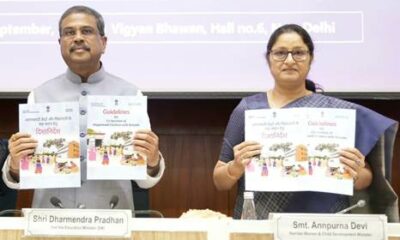
 Education3 months ago
Education3 months agoMoWCD and MoE Release Guidelines for Co-location of Anganwadi Centres with Schools
-
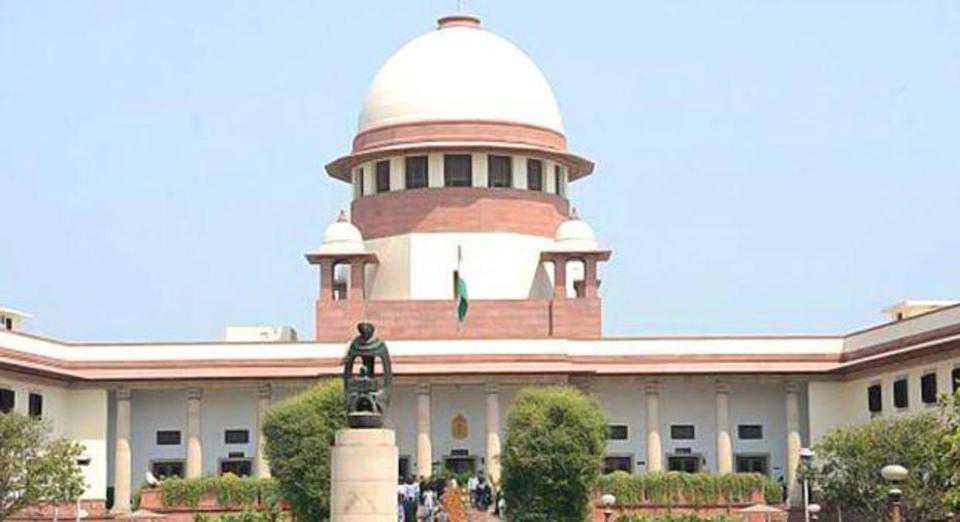
 News3 months ago
News3 months agoSC Seeks Centre’s Response on PIL for Transgender-Inclusive School Textbooks
-
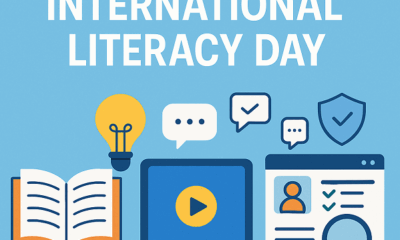
 Education3 months ago
Education3 months agoInternational Literacy Day 2025: Beyond Reading and Writing in the Digital Era
-

 Education3 months ago
Education3 months agoUK and US Tighten Student Visas: What Indian Schools and Students Must Know
-
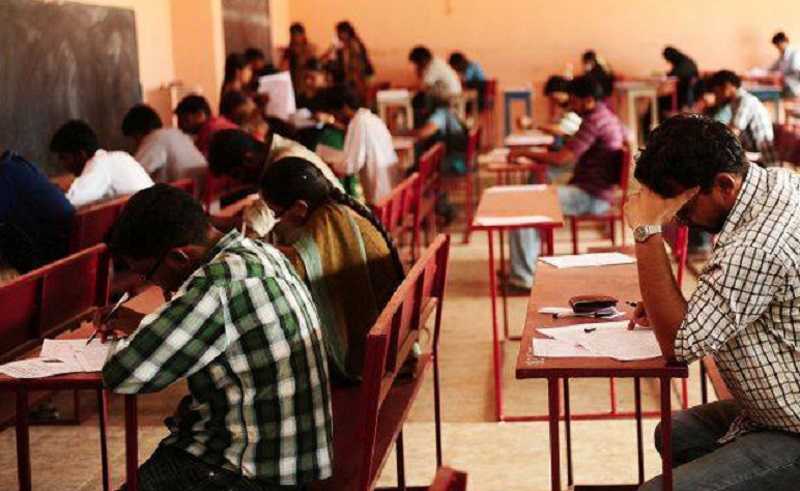
 Education3 months ago
Education3 months agoNational Task Force Calls for Wider Participation in Surveys on Student Well-being and Suicide Prevention
-
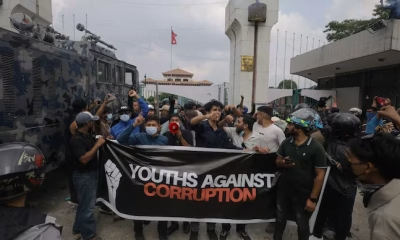
 Education3 months ago
Education3 months agoWhat Nepal’s Gen Z Protests Teach Us About Education, Civic Sense, and Media Literacy
-
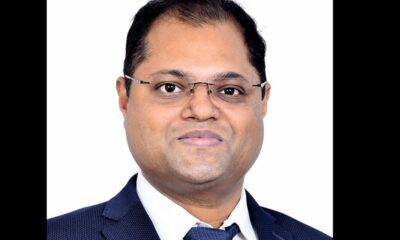
 Education3 months ago
Education3 months agoKidspreneurship Appoints Kushark Jaiswal as Chief Global Officer to Drive International Expansion
-
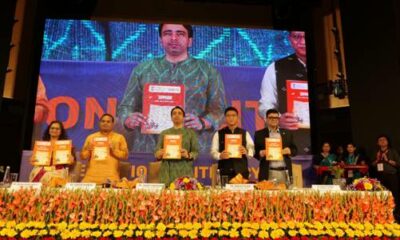
 Education3 months ago
Education3 months agoHimachal Joins List of Fully Literate States as India Marks International Literacy Day 2025
-
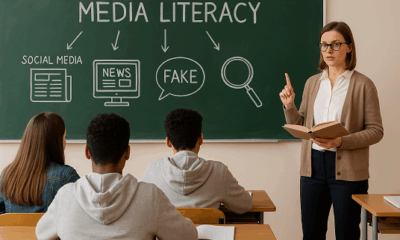
 Education3 months ago
Education3 months agoParliamentary Panel Calls for Media Literacy Curriculum in Schools









